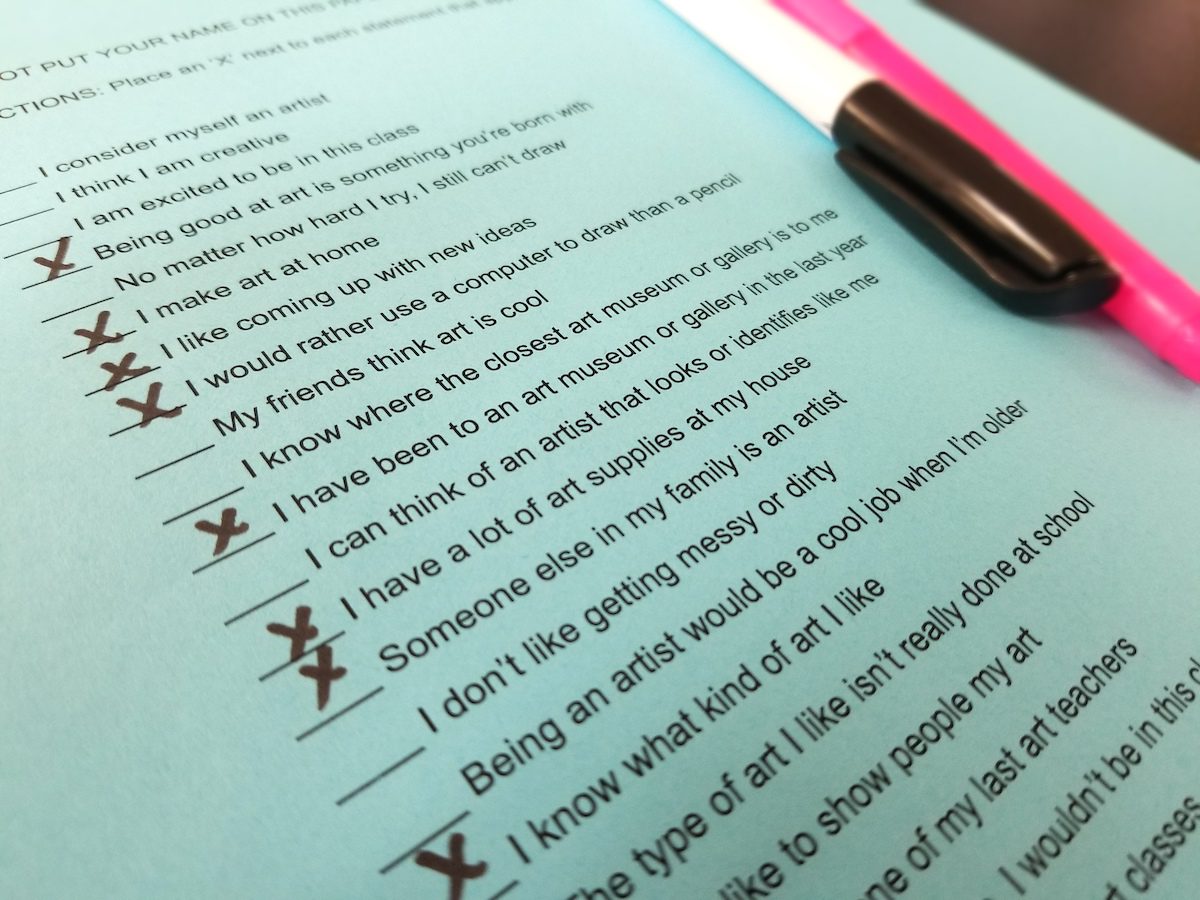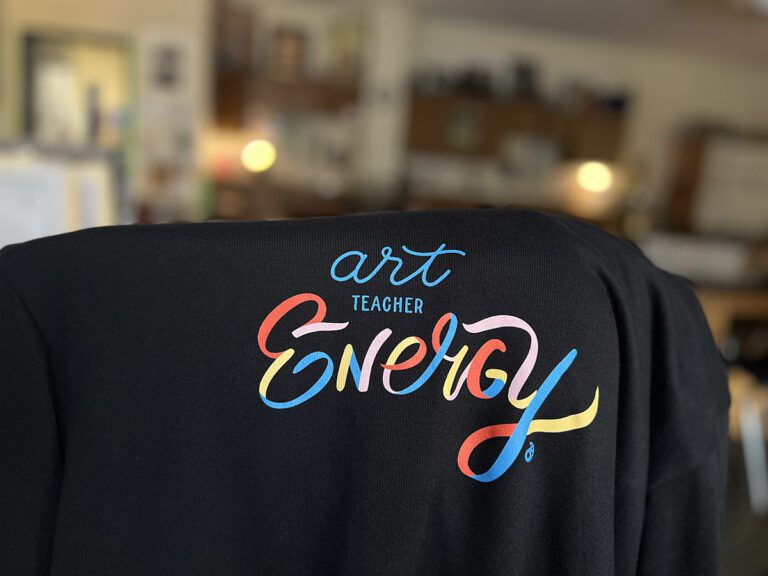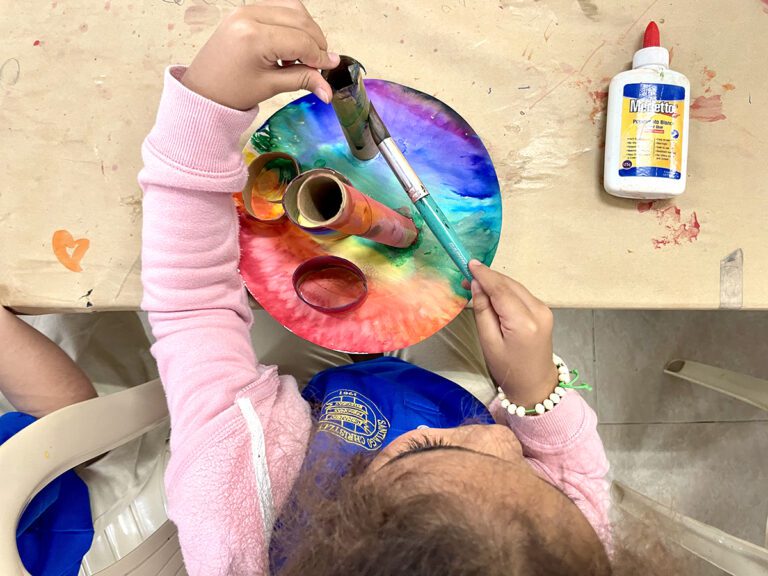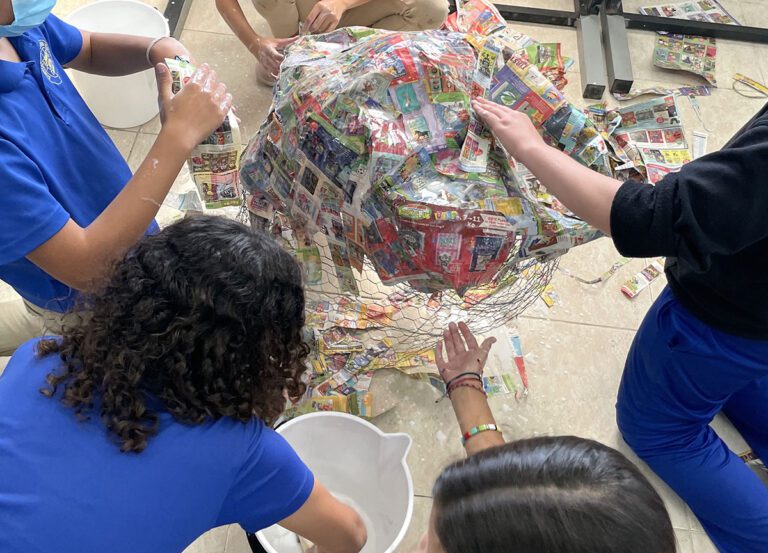For some art teachers, the new year can bring a new wave of students into the art room forcing you to hit the reset button on creating a positive learning environment. Being intentional about ways to develop a community in your room is critical at the beginning of a new class and can pay dividends throughout the semester. In addition to helping students connect, icebreakers and openers can also inform you about who is in the room. You can start to learn individual interests, understand previous art experiences, and identify different personalities and learning styles. So, start your new class with this fun game to help you learn about your new students and to help them learn about each other.
How to Play “Who’s in the Art Room?”
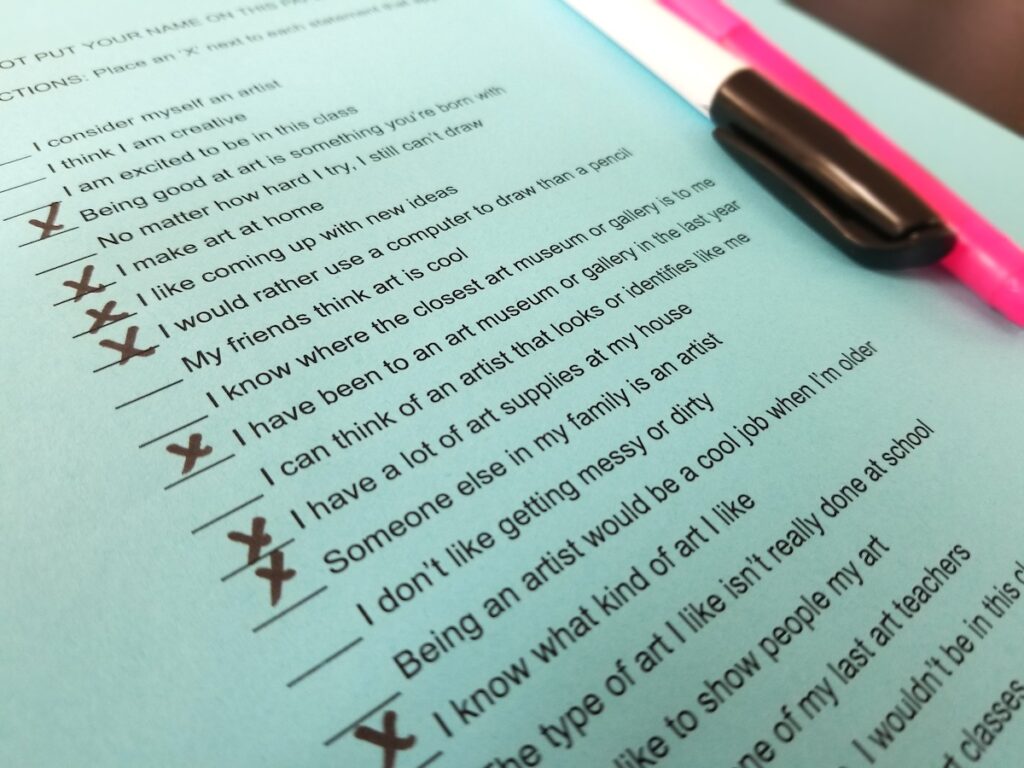
Step One: Develop your list of statements.
Come up with your own or use this download.
Think about what you want to learn from students and what will be valuable for them to know about each other. Statements can connect to past art experiences, how students feel about art and themselves as artists, interests outside of the art room, hopes and fears for the upcoming course, etc. This is an anonymous activity, so statements should not allow for specific or small groups of students to be identified.
Step Two: Have students complete the list of statements.
Remind students not to put their name on the paper as this is anonymous. Encourage students to answer honestly and share how this will help you and the class.
Step Three: Collect the papers creatively.
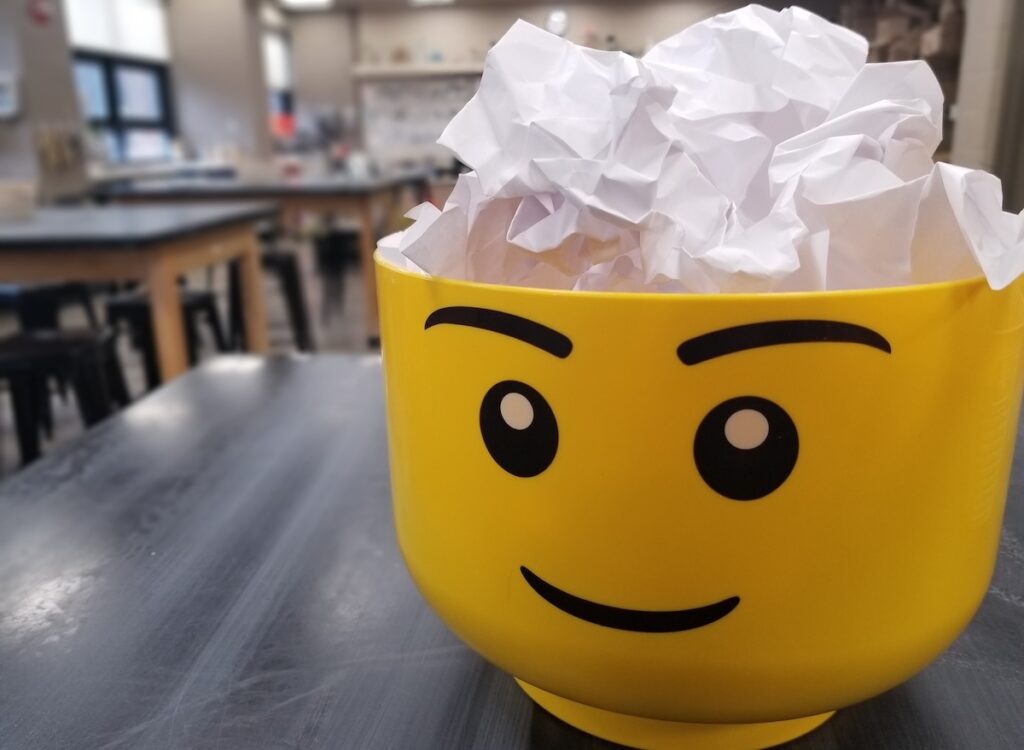
After students have completed the paper, encourage them to crumple it up into a ball and throw it toward a designated space or put it into a large container. You should make an age-appropriate decision that’s best for your class. The goal is for students to feel their paper ball can’t be identified. Then, have all students collect a random paper ball.
Step Four: Get in a circle.
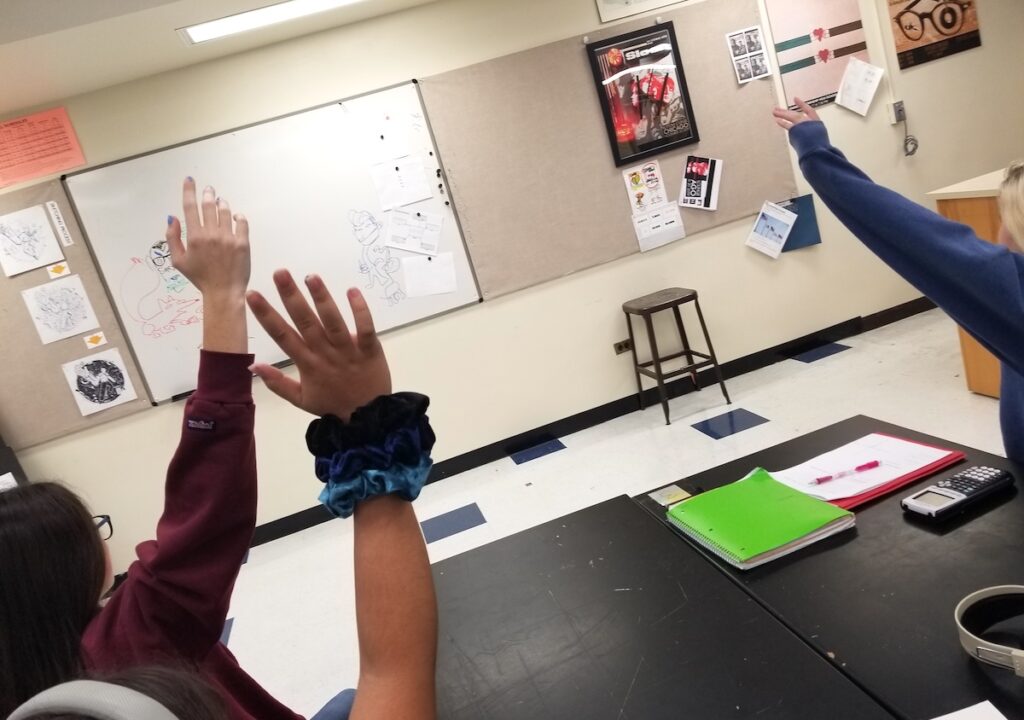
As you read each statement, have students raise their hands if the sheet they are holding has the item checked. Remember, this is not the sheet they completed. Take your time between each statement and encourage students to look around the room after each question to notice how many hands are raised.
Step Five: Prompt reflection through questioning.
Try, “What did you notice about that activity?” Or, “How can this help us have a good class together?” Remember, the students are still new with you and each other and might still be reluctant to share any thoughts or ideas. Don’t be afraid to take the lead on sharing observations and, hopefully, students will join in.
Why you will love this activity
This game is a great opportunity for a student to see that whatever they’re thinking and feeling about being in the art room, someone else is probably having the same thought. And their previous insecurity can be more supported knowing they’re not the only one. Students will know which statements they personally selected and will be more attentive when those are read. The anonymity allows for transparency and students to be more vulnerable about their feelings. When people can share experiences, they can start to build a community that will be helpful in your studio.
Secondly, collecting this data early in the class can be an incredible resource for the teacher. Even if you don’t know the specific students, getting a general understanding of where some of your students are with art can help you plan for the future. Wouldn’t it be nice to know after the first few days that more than half of your students believe being good at art is something you’re born with? Think about how that knowledge can help you plan your next lesson and approach with instruction.
Keep Playing
“Who’s in the Art Room?” can be reformated and played routinely throughout the year. As students become more comfortable in the room, they can identify their own answers. If student reading levels are a barrier, like with EL or younger students, you can alter the game by reading questions allowed and have students raise their hands or move to a corner in the room. Building a community in the art room is necessary for students to feel safe, have great critiques, and to have students reach their artistic potential. Being intentional about forming a community and, the tougher part, maintaining that community throughout the school year can be challenging. This game is just one way to make it happen. So, go play!
What other games can we use to build community in the art room?
What statements would you include to learn about your students?
Magazine articles and podcasts are opinions of professional education contributors and do not necessarily represent the position of the Art of Education University (AOEU) or its academic offerings. Contributors use terms in the way they are most often talked about in the scope of their educational experiences.
